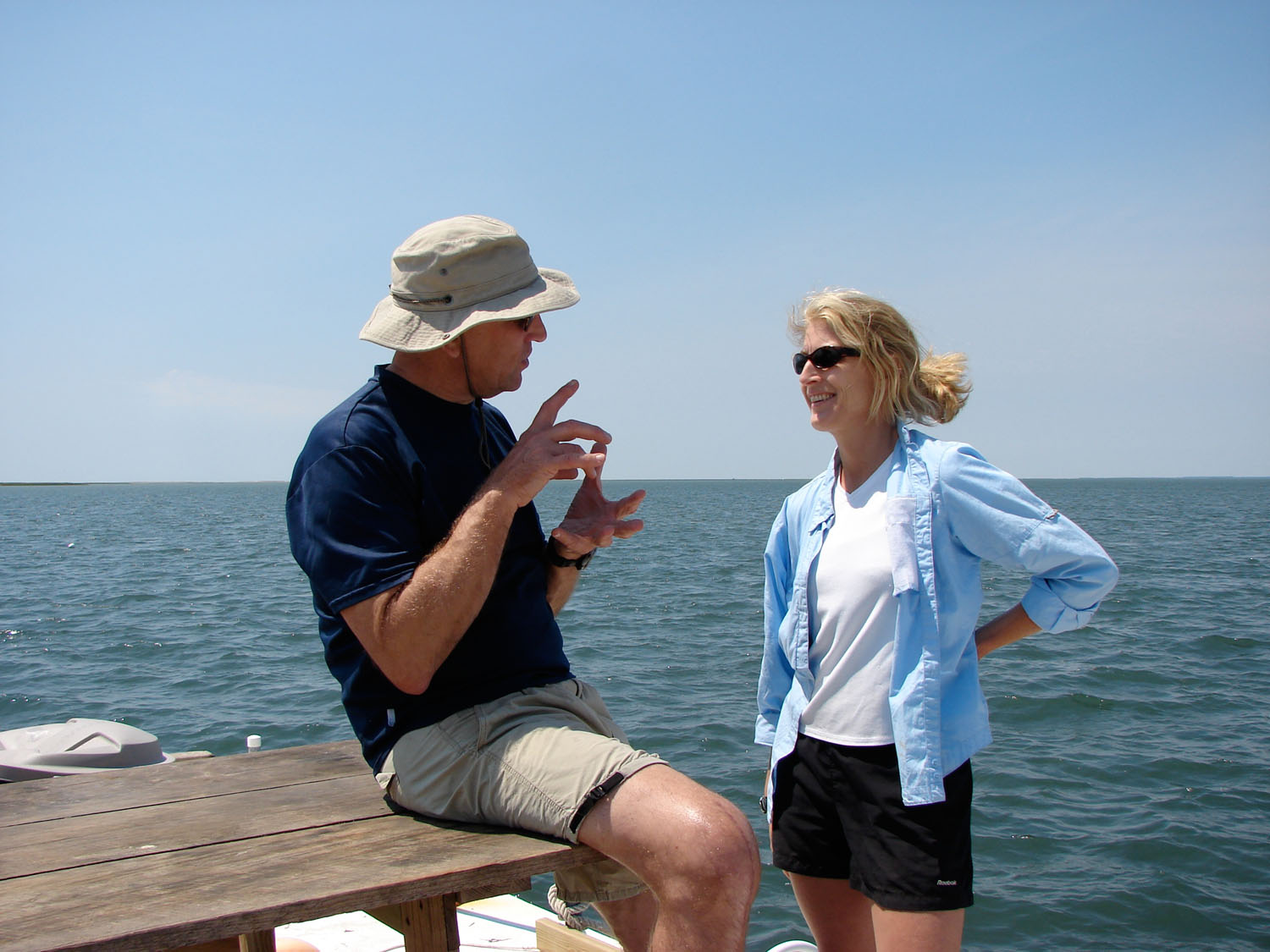June 19, 2008 — Seagrasses once flourished in the seaside bays of Virginia's Eastern Shore. They are needed to stabilize bottom sediment and provide habitat for an assortment of creatures: scallops, crabs, shrimp, mollusks, and the fish that feed on these animals.
But in the late 1920s and early 1930s a pathogen began killing them off. A hurricane in 1933 essentially wiped them out. A once thriving scalloping and fishing industry collapsed. In the years since, the bay bottoms have been mostly muddy and barren.
Today, Karen McGlathery, a U.Va. environmental sciences professor, is working on a project to restore these essential submerged grasses to the seaside bays of Virginia. She is working with a team of scientists led by Bob Orth of the Virginia Institute of Marine Science.
Recently they gathered millions of seeds from a lush 1,400 acre bed they established in South Bay, not far from the town of Oyster where U.Va. operates its Anheuser-Busch Coastal Research Center. They will scatter the seeds in the fall to other bay areas.
"We can not only get these grasses to grow," McGlathery says, "we can also get them to thrive.”
She explains in this U.Va. Audio Slide Show:
But in the late 1920s and early 1930s a pathogen began killing them off. A hurricane in 1933 essentially wiped them out. A once thriving scalloping and fishing industry collapsed. In the years since, the bay bottoms have been mostly muddy and barren.
Today, Karen McGlathery, a U.Va. environmental sciences professor, is working on a project to restore these essential submerged grasses to the seaside bays of Virginia. She is working with a team of scientists led by Bob Orth of the Virginia Institute of Marine Science.
Recently they gathered millions of seeds from a lush 1,400 acre bed they established in South Bay, not far from the town of Oyster where U.Va. operates its Anheuser-Busch Coastal Research Center. They will scatter the seeds in the fall to other bay areas.
"We can not only get these grasses to grow," McGlathery says, "we can also get them to thrive.”
She explains in this U.Va. Audio Slide Show:
Media Contact
Article Information
June 19, 2008
/content/environmental-scientists-working-restore-seagrass-eastern-shore-bays

